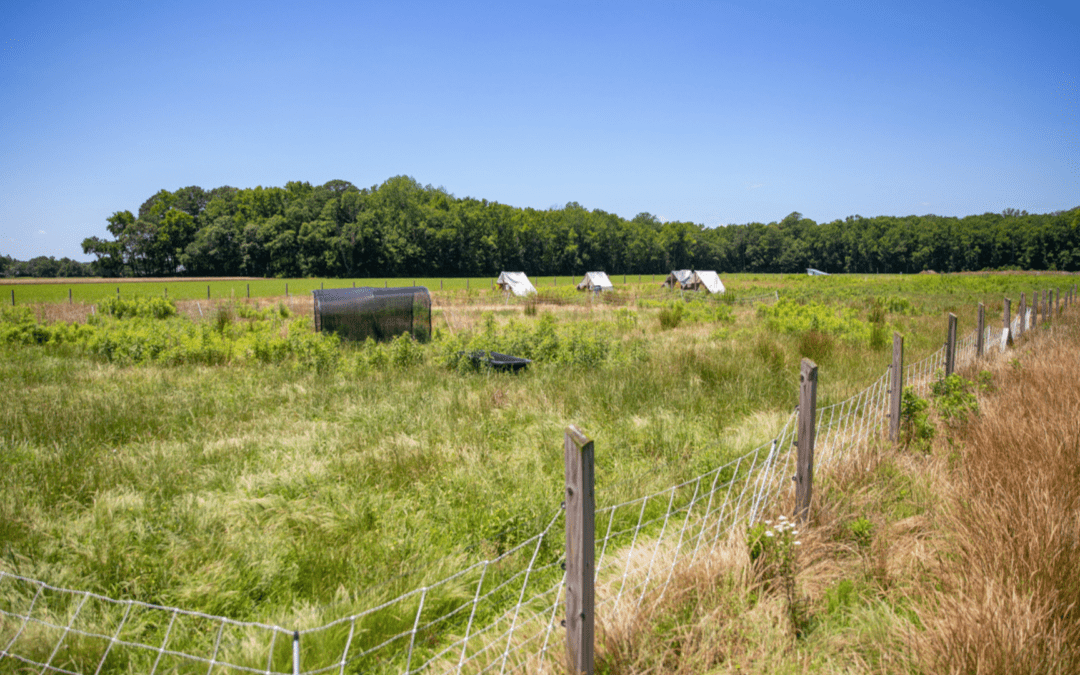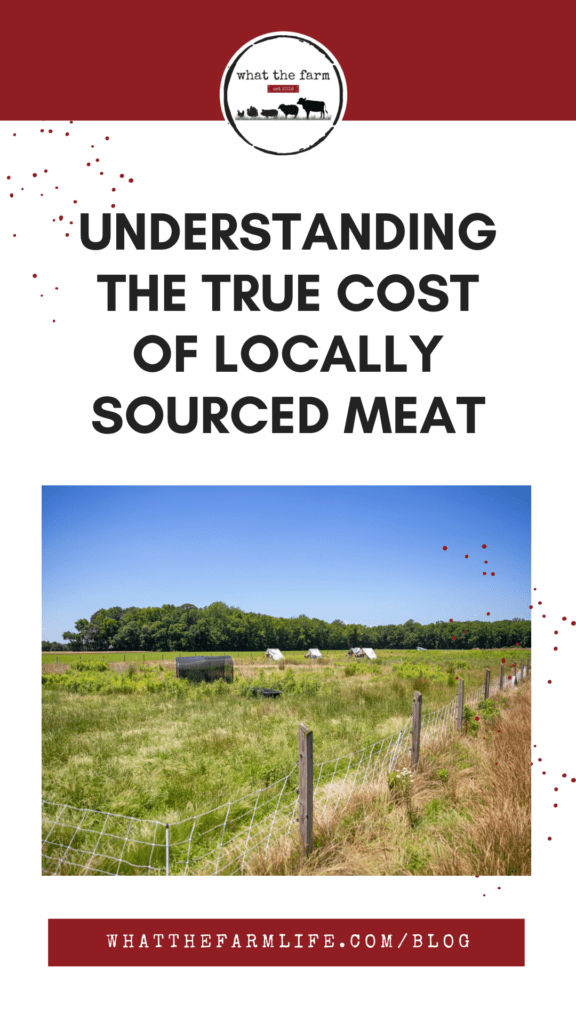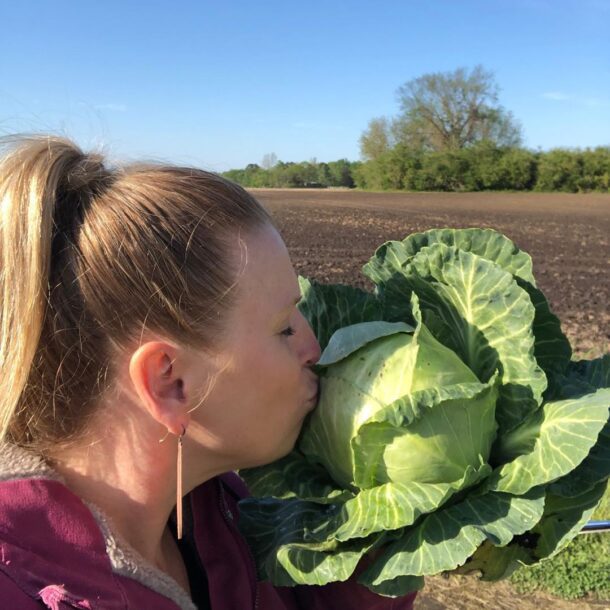If you’ve ever shopped for local meat, you know that it can be quite pricey. But why is that? After all, raising animals doesn’t seem like it would be all that expensive. The truth is that raising animals locally is actually quite costly. In this article, I’ll share the reasons behind the pricing of locally sourced meat.
Questions From The Farmer’s Market
- “Why are your prices so high?”
- “It doesn’t cost this much at the grocery store.”
- And my personal favorite, “You must make a fortune selling meat!”
When we started selling our chicken at the farmer’s market, these were the things people used to say to me. At first, I was a little embarrassed and considered lowering my prices (before I realized I would go completely broke). Later, when people would question my prices, I would get angry and defensive. Time has taught me that customers aren’t trying to be rude; they just don’t understand…
I get it. I used to buy frozen chicken at Walmart.
Until 4 years ago, all of the food that we consumed came from a grocery store. I would have said those same things to the farmers schlepping their wares at the local markets.
So why does it cost so much? Joel Salatin of Polyface will tell you, “because that’s what it costs to grow.” He is absolutely right, but let’s dig into it a little more.
Understanding The Costs To Grow Locally Sourced Meat
- Feed: There is a huge difference in the price of feed when you buy small batches versus the hundreds of thousands of pounds that industrial meat growers purchase. We process less than 1000 chickens on our farm per year. Until this year, we bought our feed in fifty-pound bags. The smaller the bag, the higher the price. We now buy our feed by the ton, but the price is still significantly higher than what large farms pay per pound. Add to that the quality of the feed. Most small farms opt for non-GMO or organic feed that is local. Higher quality feed costs more.
- Labor: Labor is another huge factor in the cost of pasture-raised meat. Our chickens, sheep, and cattle are all rotated to ensure the health of our animals and the soil. That means we physically move those animals to fresh pasture every single day. Our pigs get a new spot in the woods weekly. We feed and water them by hand and put our eyes on them each morning. We also process all of the poultry on the farm and drive the livestock to be processed at a USDA facility. The closest one to our farm is two hours away. We also have to work at the farmer’s markets where we sell our meat. All of this takes time and energy.
- Infrastructure: In order to rotate animals on pasture, you need temporary fencing, chicken tractors (small mobile chicken houses), and lots of land. You also need processing equipment, trailers to haul animals, freezers, tents, coolers, and tables for markets. And the list goes on and on…
Grass-fed Animals Take Time and Land
But what about grass-fed animals? Does it cost anything to feed?
I get this question a lot…. It is true grass on our farm is cheap. We don’t fertilize or seed, so we don’t have those costs, but we pay for the land. A few months ago, Chris and I bought 26 acres next door, and we have a pretty significant land note. We also pay in time. A grass-fed lamb takes over a year to grow, and grass-fed cattle can take up to 3 years. Grain-fed animals grow much faster and require less land.
The bottom line is that the cost per animal on a small farm is so much higher than the big industrial farms that sell to your grocery store. I also believe that you get what you pay for. Locally raised meat is healthier and better for the environment (there is a much lower carbon footprint), and in my humble opinion, tastes so much better.
Recap: The Value Of Locally Sourced Meat
So there you have it. Now you know. If you still want to buy your chicken, pork, and beef from the store, that is 100% fine, just don’t give your local farmer the stank eye when you see them selling their meat for what it’s really worth. The extra cost supports local farmers and helps ensure that animals are raised humanely and sustainably. So go ahead and splurge on that locally raised meat – it’s worth it!
If you are interested in shopping local, visit our store or come and see us at a farmer’s market!
No Experience Necessary,
Kelly






